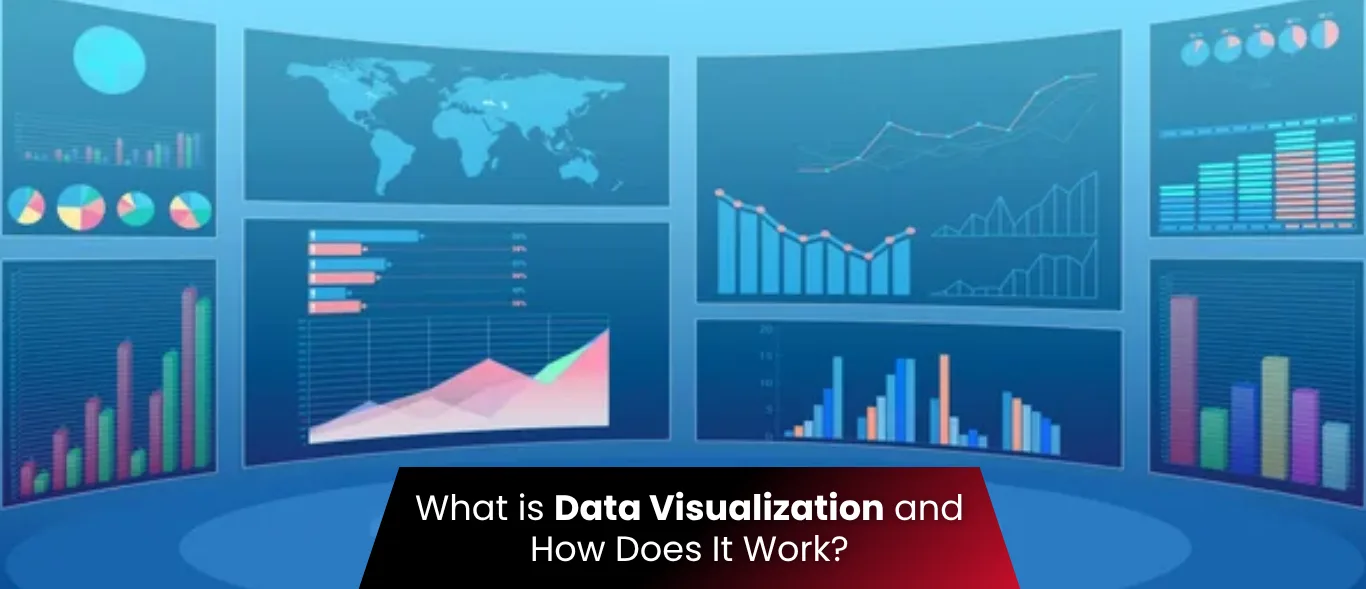Data visualization makes it comparatively easy for the human brain to comprehend information and helps detect patterns and outliers in data sets.
The increasing reliance on data has made it imperative to present information in visual form (graphs) for quicker, more effective consumption.
The graphical depiction of data is a method of visual communication that engages program stakeholders by enhancing their ability to understand data and participate in the assessment and decision process.
From static to interactive to time-series data visualization, and from causal loop diagrams to system dynamics models, data visualization has seen rapid growth over the last decade or so.
That’s because of the availability of not only cost-effective technology but also faster computing.
Data visualization tools are increasing in number because data analysis is no longer the exclusive domain of the IT department or a team of data scientists.
Professionals from as disparate fields as health and tourism are now consumers of data and so need these visualization tools for their own analyses.
Visualized data helps all the stakeholders conjure a better forecast of the future.
There are many techniques for visualizing data, ranging from simple Excel sheets to various graphs and tables to pre-built dashboards.
Science has moved from static to interactive, and now even time-stamped.
What is Data Visualization and How Does It Work?
Before getting into the details of the time-series visualization, here’s a quick explainer of data visualization and its works.
Visualization gives a clear “picture” of what the data analysis means by giving it a visual context.
Scientifically, the human brain processes images better than words, so data visualization makes it easier for the human mind to identify patterns in large datasets.
Then, the visualization may take the form of a map, graph, bar chart, or another type of chart.
The objective here is to communicate information to the target audience effectively.
According to this research paper, data visualization is defined as the process of using qualitative or quantitative data to create an image that represents the raw data. This image is readable by viewers and supports the exploration, examination, and communication of the data.
For data visualization to happen, you need to take raw data, model it, and deliver the analysis so conclusions can be drawn.
Today, data analysts are also developing machine learning algorithms to collate data for better visualization purposes.
Want to Explore Our Business Intelligence and Analytics Services? >>>> Learn more
Time Series Data Visualization Types and Dashboards
Time series monitors trends over time, making it one of the most valuable applications.
One needs all the important historical data to forecast the future, and a time-series visualization dashboard shows where your enterprise is and where it could go.
From taking information from an Excel spreadsheet and turning it into bars or graphs, data visualization has also come a long way beyond this static output.
Earlier static data visualization methods lacked interactivity and thus were unable to adapt over time.
These were used to convey specific data to a store, making them best for less complex presentations. An example would be an infographic.
On the other hand, interactive data visualization helps change how data is graphically represented.
They can do this by using interactive tools that adjust data visualization parameters, enabling users to see more details, gain deeper insights, or ask additional questions about the data.
Unlike earlier years, today open-source projects and programming languages like Java have made interactive visualization more accessible.
Whether static, interactive, or time series, you need to carefully consider which type of visualization best suits your project before finalizing. The arbitrary choice is of no help.
If time is a major factor, you need to deploy time-series data visualization. Here, you can map data points against intervals of time. Each point corresponds to the time and quantity to be measured.
On an x-y graph, Y is used to plot time, while the vertical axis shows the values of the variable being measured. These charts are used to lock in on a trend or understand how a metric has changed over time.
What is Time Series Data Visualization?
First, there was static, then interactive data visualization. Then came along the time series visualization, often described as “the most accurate form of data visualization” so far.
It tracks data over time, allowing you to follow changes and generate forecasts.
Time series data visualization can be described as driving with one eye on the rearview mirror, as it allows enterprises to analyze real-time and historical metrics.
If you are interested in knowing about dashboards and data visualizations, our team of experts is on standby. Just fill in this short form
Easy to create, a line graph is the simplest way to represent time series data. The graph uses points connected by lines to show how a dependent variable and an independent variable change over time.
An example would be the movement of X company's shares over the last month.
Other quick methods of depicting data include temporal visualizations. These are similar to one-dimensional linear visualizations.
The characteristics of temporal data include items with start and finish times.
Timeline visualizations usually show events before, during, and after a time period.
The tools for temporal visualizations include d3.js, developed by the creators of Provotis. It’s a free JavaScript library for manipulating documents based on data.
Some examples of temporal visualizations are: timelines, Gantt charts, arc diagrams, time series charts, and alluvial diagrams.
With the explosion in data, time-series visualization has become increasingly important across sectors such as finance, pharma, and even social media.
Express Analytics’ data scientist, Anubhav Sarkar, created these four plots using a Python script and stock price data. The heatmap shows the monthly average “Opening Price” data, with darker red indicating very high opening prices and darker green indicating very low opening prices.
Why is Data Visualization Important in Machine Learning?
Data analysts can apply data visualization techniques in machine learning to maintain a clear view of the data at every step.
Later, they can shift their focus to model design, model performance, and data meaning.
The importance of data visualization in machine learning can be understood by examining the algorithms used to create these innovative programs. The machine learning algorithms can speed up the data discovery process.
How Does Machine Learning Help in Data Analysis?
When you assign machines tasks such as categorization, clustering, and anomaly detection – activities at the foundation of data analysis – you are implementing machine learning.
You can create self-improving learning algorithms that consider data as input and provide statistical conclusions.
The algorithms make judgments whenever they notice a change in pattern without depending on hard-coded programming.
Before looking at particular problems associated with data analysis, you need to discuss a few terms used to classify various machine learning algorithm types.
Initially, you can notice that the majority of algorithms are either regression-based, in which machines forecast values, or classification-based, in which machines sort information into classes.
Now, let’s differentiate between unsupervised and supervised algorithms.
The data used to train unsupervised ML algorithms doesn’t require an output variable to direct the learning process. At the same time, a supervised algorithm offers goal values following data training.
Even though these machine learning models are popular, you still need human intervention to obtain the conclusions of the data analysis.
Through advanced techniques and features, machine learning improves the process of data analysis in the following ways:
Data cleaning is the most challenging step of analysis and consumes time.
Recognize fraudulent transactions
Machine learning is a complicated technology that thoroughly examines audience behavior data.
Increase Your Business Efficiency with Our BI Professionals >>> Learn More
How Does Data Visualization Use Machine Learning?
Machine learning visualization, or ML visualization, is the activity of representing data, ML models, and their interactions via pictorial means.
Machine learning uses a methodical approach to conduct data analysis. The task depends on three major components: data summarization, data mining, and data visualization.
Automated tools primarily summarize the actual data structure and distribute it based on its attributes.
Data structure
Machine learning for data analysis uses numerical and categorical data to summarize the data. The objective is to make the data transformation process as simple as possible.
Data Attributes
The attributes are distributed and summarized in such a way that it eases the data preparation process.
The main elements include employing real-value attributes to produce a five-number summary.
Minimal accuracy is defined, and summarization is performed using the predictive model.
Later, parametric and nonparametric methods are employed to examine pairwise attribute correlations using the correlation coefficient.
Visualize data
The information is compiled into a graph, analyzed, and captured to build a structure. These attributes will help you understand the emergence of machine learning solutions for finance automation.
How are AI and ML Shaping Data Visualization?
Let’s see how AI and ML are shaping data visualization:
- Exploring millions of unfamiliar datasets.
- Measuring data
- Identifying patterns according to the data gathered by the company
- Finding answers to well-formed queries; testing hypotheses
- Identifying unexpected behaviors
- Presenting analytical summaries to non-technical audiences
Why Do Businesses Need to Combine ML with BI Visualization Tools?
When integrated with ML, BI software helps business owners identify a layer of insight often missed by even the most experienced professionals.
The benefits of ML algorithms for business intelligence reports post-integration are listed below:
Task automation
ML can manage day-to-day tasks, allowing both consultants and analysts to use their time more productively.
Self-service
New stages of self-service will be reached through business intelligence tool sets, minimizing the need for a technical background and providing effortless ways to communicate with data.


